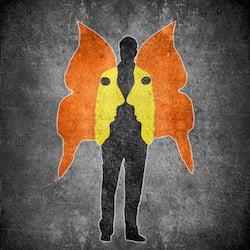Claims and Appeals
Schizophrenia

Schizophrenia is a severe brain disorder that affects about 1 percent of Americans. Even though 1 percent of Americans have this disorder, 5% of the people who receive Social Security disability benefits have schizophrenia as one of their diagnoses. The word “schizophrenia” is Latin which means “a splitting of the mind.” The term schizophrenia was first used by Eugen Bleuler, a Swiss psychartrist, at the beginning of the 20th Century when he wrote a paper about some of his patients. What Dr. Bleuler understood as being “spilt” was the “unity” of his patient’s personality.
The understanding of schizophrenia has developed since Dr. Bleuler first presented his paper. Today, schizophrenia is understood as a biological illness, that is, the illness is based on brain chemistry and brain structure. Scientists also believe that the environment of a person (issues and complications before and during birth, viruses which a person may acquire during the course of his or her life and psychosocial elements) combine with the brain chemistry and brain structure to trigger the symptoms of schizophrenia.
The National Institute of Mental Health (NIMH) has recognized many outward manifestations or symptoms of schizophrenia. NIMH has categorized the symptoms of schizophrenia into three main areas. The first area is called “positive symptoms.” Positive symptoms include hallucinations (meaning things which a person sees, hears, smells or feels that no one else does); delusions (false beliefs that a person holds such as being controlled by another, believing that someone wants to harm them); thoughts disorders (including disorganized thinking such as organizing thoughts, making up words “neologism”; stopping speaking in mid-sentence “thought blocking”) and movement disorder (repeating certain movements over and over or not moving at all).
NIMH’s second area is called “negative symptoms.” Negative symptoms include disruptions to normal emotions and behaviors (including the need for help in everyday tasks and neglect of basic hygiene).
The third and final area is known as “cognitive symptoms.” As the name implies, these are thinking problems which include trouble focusing or paying attention, poor executive functioning and issues with “working memory”.
Schizophrenia is a serious and complicated disorder. In fact, schizophrenia is known to reduce the life expectancy of a person afflicted with the disease by as much as 12 to 15 years. The reduction of life expectancy is due to the co-morbidities which exist with the disease. These co-morbidities include obesity, leading a sedentary life without exercise, and smoking cigarettes. While suicide plays a role in schizophrenia it is not thought to be a major role.
Regrettably, there is no known cure which can make the underlying disorder go away. Consequently, professionals treat only the symptoms of schizophrenia. The treatments include drug therapies and psychosocial therapies (which include cognitive behavioral therapy as well as family therapy).
Professionals recognize and data confirms that schizophrenia can be debilitating. However, not all persons who have the diagnosis of schizophrenia are disabled. That said, the Social Security Administration has included the mental illness of schizophrenia on its list of impairments which may be considered presumptive disability, that is if the criteria of the listing are met or equaled, there will not be a consideration of age, education or work history.
The Social Security Administration’s listing for schizophrenia is found at Listing 12.03, 20 C.F.R. pt. 404, subpt. P, app.1. This listing considers whether: 1.) there is an actual medical diagnosis of schizophrenia; 2.) there exist certain symptoms that are associated with schizophrenia; and 3.) the functional limitations in the areas of activities of daily living; social functioning; and concentration, persistence or pace are all considered “marked.” An alternative to the functional limitations criteria is whether there has been evidence of episodes of decompensation. These episodes must be both repeated and their duration must be extended.
If there is an actual medical diagnosis of schizophrenia but the associated symptoms and/or the functional limitations noted above are not proven, the Social Security Administration offers another path to meeting or equaling the listing. That pathway is to prove that there has been is history of 1 year or more of living in a highly supportive environment and not being able to live outside of that type of environment. Or there must be proven chronic schizophrenic for at least 2 years coupled with either periods of decompensation or if there is no decompensation, it is proven that even a marginal adjustment to changes will cause decompensation.
Even if it cannot be proven that the schizophrenia can be met or equaled, if there is proof that the disease has reduced the functional capacity of the person that there is no work available, then disability will be proven.







